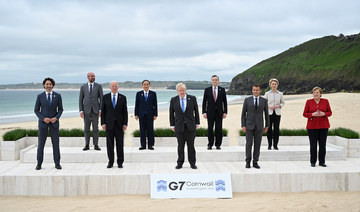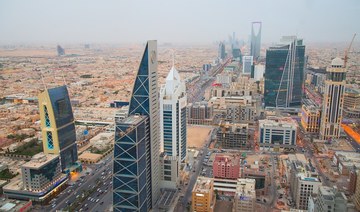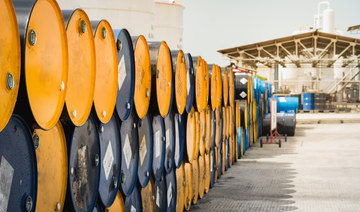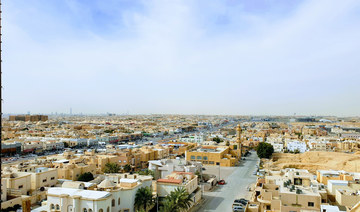DUBAI: Tax advantages paired with a life of luxury have long drawn foreigners and multinationals to the UAE, which is aiming to remain attractive whether or not it signs up to a global tax initiative.
The Group of Seven wealthy powers this month endorsed an “unprecedented” agreement on a global minimum corporate tax targeting major companies seen as not paying enough, especially tech giants.
The objective is a minimum tax of at least 15 percent.
While the agreement is the first step in a long process before it can become a reality, caught in the crosshairs are tax havens that attract firms such as Amazon, Apple, Google and Facebook.
The United Arab Emirates entered the world’s top 10 tax havens for the first time in March, according to the Tax Justice Network.
Modestly called “jurisdictions with no or insignificant taxes” by the Organization for Economic Co-operation and Development (OECD), the havens include the Bahamas, the British Virgin Islands, Guernsey, Jersey, the UAE and many others.
Both the UAE capital Abu Dhabi and freewheeling Dubai, the biggest draw for investors out of the UAE’s seven emirates, are home to thousands of companies that have set up regional offices there.
UAE officials have yet to issue a statement on the G7 agreement and did not respond to an AFP request for comment.
But this week Dubai announced plans to reduce in the coming months government procedures as “part of efforts to reduce the cost of doing business and further boost economic growth in the emirate.”
Hard-hit by the coronavirus pandemic, the UAE has already launched a series of reforms, including to allow foreigners full ownership of businesses, whereas before it was capped at 49 percent unless based in certain free trade zones.
Economy Minister Abdulla bin Touq Al-Marri said the changes were a bid to boost the “competitive edge” of the country, currently 16th in the World Bank’s ease of doing business rankings.
The UAE, which relies on its image as an international hub, “will be keen to be seen as part of the global system rather than a tax haven,” said Scott Livermore of Oxford Economics Middle East.
“The upsides of remaining on the outside of the agreement is limited, especially if approved by the G20 and OECD countries,” the Dubai-based economist told AFP.
According to Livermore, even if businesses in the country see an increase in tax burden, the government was likely to “consolidate and simplify fees,” as is the case in Luxembourg and Malta, where multiple exemptions lower the final bill considerably.
“Already the authorities have realized the importance of broader business and social environment for attracting and retaining foreign investment and talent,” he said.
“This has been demonstrated by the raft of visa and business reforms announced over the past year.”
Many foreign executives are attracted to the lifestyle in Abu Dhabi and especially Dubai.
The two emirates are air hubs and offer a variety of luxury services that depend on a migrant labor force largely from South Asian countries.
The UAE’s low tax regime has been a “major carrot to dangle” before investors from abroad, said Robert Mogielnicki, senior resident scholar at the Arab Gulf States Institute in Washington.
“Emirati policymakers will have to get creative and consider restructuring various business-related fees,” he told AFP.
“But even with the envisioned impact of a minimum global corporate tax, the UAE will remain a relatively low-tax environment.”
And regardless of new taxes introduced in Gulf countries in the past years amid an economic slump due to a drop in oil prices, Mogielnicki believes the Emirates will remain competitive.
“The UAE’s commercial environment enjoys excellent connectivity to key global markets, a high standard of living, and a dynamic labor market with cost-effective, skilled expatriate labor,” he said.
“I don’t think the UAE government or its citizenry will truly miss any of the firms or investors who only care about preferential tax treatment over the long run — even if missing out on some business opportunities will sting over the short run.”
Tax or no tax, UAE aims to remain magnet for investors
https://arab.news/mq4dg
Tax or no tax, UAE aims to remain magnet for investors
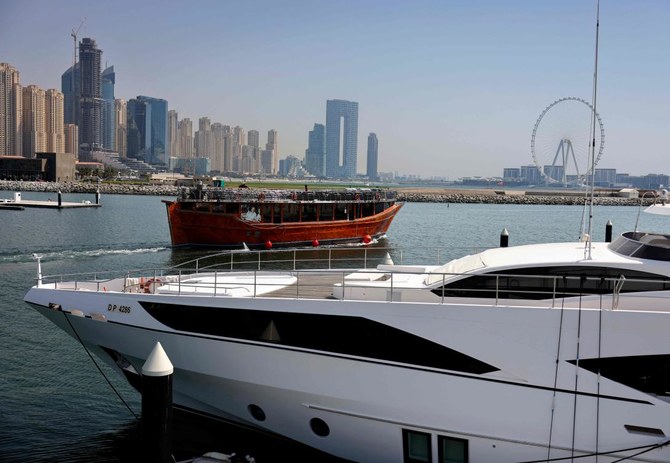
- Hard-hit by the coronavirus pandemic, the UAE has already launched a series of reforms, including to allow foreigners full ownership of businesses, whereas before it was capped at 49 percent unless based in certain free trade zones
World Bank raises Saudi Arabia’s 2025 GDP growth forecast to 5.9%
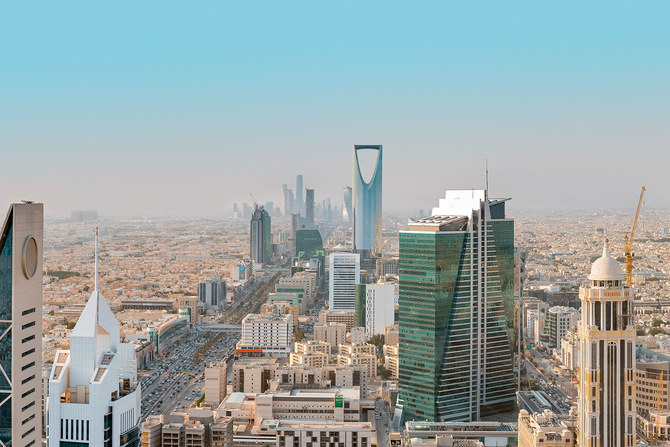
RIYADH: The World Bank has raised its expectations for Saudi Arabia’s economic growth to 5.9 percent in 2025 from 4.2 percent predicted earlier in January.
In its latest report the bank, however, revised its 2024 forecast for the Kingdom’s gross domestic product growth downward to 2.5 percent from an earlier forecast of 4.1 percent.
Concurrently, the overall GDP growth forecast for Gulf Cooperation Council countries in 2024 has been reduced to 2.8 percent, down from 3.6 percent, while the 2025 forecast has been revised to 4.7 percent from 3.8 percent.
The report also adjusted the UAE’s GDP growth forecast to 3.9 percent for 2024, up from the previously projected 3.7 percent, with a further rise to 4.1 percent in 2025, from 3.8 percent.
Kuwait’s economy is expected to expand by 2.8 percent in 2024 and increase further to 3.1 percent in 2025.
Similarly, Bahrain’s economy is likely to grow by 3.5 percent in 2024 and 3.3 percent in 2025, marking an increase from January’s projections.
Meanwhile, Qatar’s economy saw a downward revision for its 2024 forecast from 2.5 percent to 2.1 percent but an upward revision for 2025 from 3.1 percent to 3.2 percent.
Oman’s economy projections for 2024 and 2025 saw a marginal increase of 0.1 percent since the January forecast.
This adjustment reflects the broader economic trends where the surge in oil prices following Russia’s invasion of Ukraine in 2022 bolstered oil-exporting economies in the Middle East and North Africa.
In contrast, economic growth in non-oil-exporting nations — including MENA oil importers like Djibouti, Jordan, Morocco, Tunisia, and the West Bank and Gaza — has slowed.
By 2024, the growth disparity between GCC oil exporters and developing oil importers is expected to narrow to just 0.9 percentage points, marking a significant shift from 2022 when GCC countries grew 5.6 percentage points faster, the report stated.
“Developing oil exporters will grow 2.8 percent in 2024, down from 3.1 percent in 2023 while growth in developing oil importers is forecasted to decrease to 2.5 percent in 2024, down from 3.1 percent in 2023,” the report stated.
Overall, the MENA region is expected to achieve a growth rate of 2.7 percent in 2024, which aligns with pre-COVID levels but still trails the global average.
While other emerging markets and developing economies are also projected to remain below pre-pandemic growth rates, they are expected to surpass the MENA region by 1.2 percentage points in 2024.
GCC oil companies’ capex to grow by 5% to reach $115bn in 2024
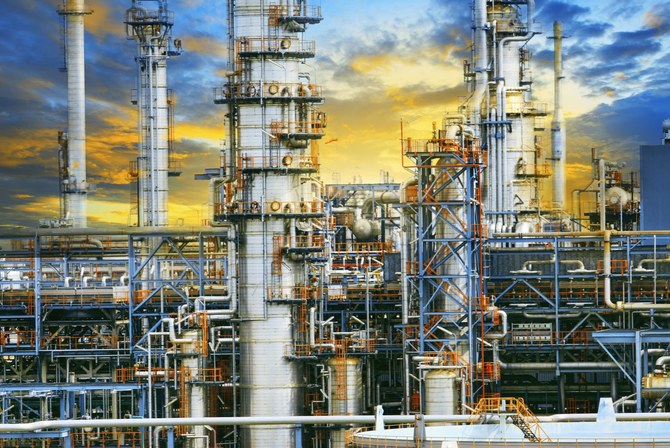
RIYADH: The capital expenditures of national oil companies in the Gulf Cooperation Council are likely to grow by 5 percent in 2024 as compared to the previous year and are expected to reach $115 billion, according to a report.
The analysis by S&P’s Global Ratings, however, does not take into account the potential surge in spending from recent expansion plans such as the North Field West Project in Qatar, which it said could significantly boost expenditures.
The report highlighted that while the growth in capital expenditure is modest, Saudi Arabia’s planned output cuts in line with the current policy of the Organization of the Petroleum Exporting Countries and its allies, known as OPEC+, is likely to decrease demand for drilling platforms, operating ratios, average daily production rates, and profitability among regional drilling companies, especially in the Kingdom.
“We stress-tested the effect of a hypothetical 15-20 percent loss of total rig demand in the region on GCC drillers, and we estimate that the debt to EBITDA (Earnings Before Interest, Taxes, Depreciation, and Amortization) of rated and publicly listed drillers based in GCC countries could increase by about 1x on average,” S&P Global Ratings Credit analyst Rawan Oueidat said.
“At this point, we think that drillers’ rating headroom could shrink, but we don’t expect any short-term rating pressure,” Oueidat added.
The agency also raised concerns about the future of capital expenditure in other oil and gas-producing countries of the GCC, following Saudi Aramco’s decision to suspend its plan to increase the Kingdom’s maximum production capacity.
Despite these concerns, the total oil capital expenditure in the region is expected to remain relatively high due to the ongoing expansion plans in Qatar and the UAE.
However, the pace and magnitude of spending are expected to impact oilfield service companies and the entire value chain, particularly drilling companies whose business models heavily rely on corporate capital expenditures.
The UAE’s Abu Dhabi National Oil Co. is set to increase its oil production capacity to 5 million barrels per day by 2027, up from 4 million bpd as of February 2024, according to the US Energy Information Administration.
Meanwhile, Qatar is aiming to boost its liquefied natural gas production capacity to 142 million tonnes annually by 2030 from the current output of 77 million tonnes.
The report predicted oil prices to average $85 per barrel for the remainder of 2024 and $80 per barrel the following year.
It also suggested that geopolitical tensions and planned production cuts by OPEC+ will support prices and enhance the cash flows of oil companies across the Gulf region.
Saudi housing program Sakani benefits over 32,000 families in Q1
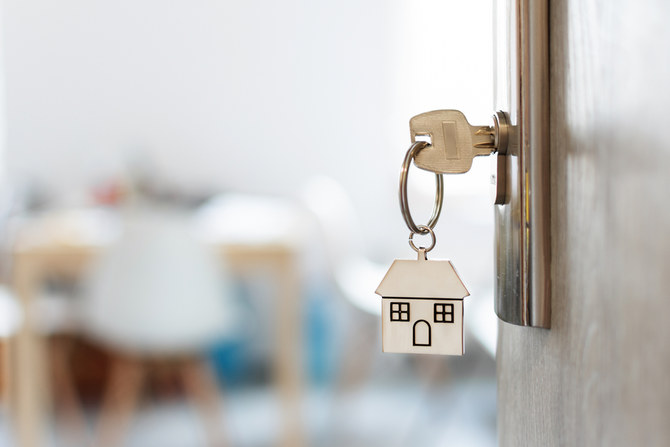
RIYADH: As many as 32,343 Saudi families benefitted from Sakani’s housing options during the first quarter of 2024, marking an annual 15 percent increase.
In collaboration with the Real Estate Development Fund and financial institutions, the program provides a variety of housing support packages to encourage first-time house buyers, including non-refundable financial assistance of SR100,000 ($26,659) or SR150,000.
The number of the Kingdom’s households that purchased their first homes reached 25,391 in the first three months of the year, reflecting the objective of Sakani to offer a variety of residential options and financial solutions.
Founded in 2017 by the Saudi Ministry of Housing and the Real Estate Development Fund, the program aims to increase the proportion of families that own a home in the Kingdom to 70 percent by 2030, in line with the economic diversification strategy Vision 2030.
Figures from Sakani showed that the number of beneficiary households reached 12,184 in March, with 9,381 Saudi families obtaining their first residence.
In January, Sakani announced that more than 100,000 Saudi families benefited from the initiative in 2023, while the number of applicants who obtained their first home over that 12 month period reaching 98,475.
The core objectives of the Sakani initiative are to enable homeownership in the Kingdom by creating new housing stock, assigning plots and properties to citizens, and providing financing for their purchases.
The Sakani website and application provide a wide range of housing facilities and services, such as real estate consultancy, issuance of real estate transaction tax certificates and a display of financing institution rates.
It also provides electronic financing and the disbursement of land contracts, engineering design services, access to certified contractors, and additional services.
Qatar inflation dips 1.4% in March: official data
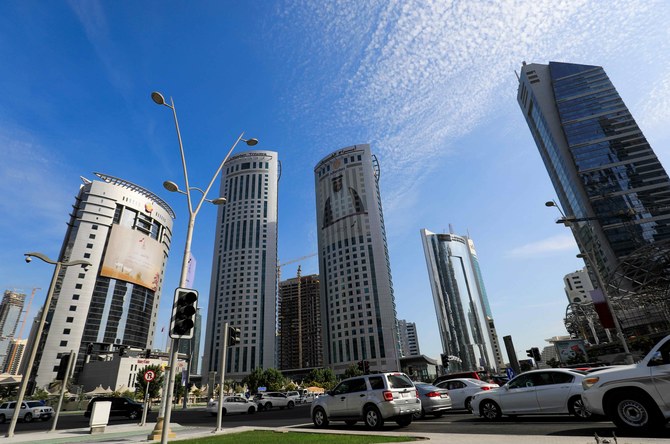
RIYADH: A fall in food and beverage prices helped drive Qatar’s inflation down 1.4 percent in March as compared to the previous month, official data showed.
According to a report released by the country’s Planning and Statistics Authority, the consumer price index reached 106.67 points in March.
Compared to February, expenses for food and beverages slid by 4.74 percent in March. Prices for recreation and culture witnessed a decline of 5.58 percent during the same period.
Similarly, costs for restaurant and hotels, as well as furniture and household equipment, decreased by 1.92 percent and 0.34 percent, respectively, in March compared to the previous month.
On the other hand, prices for clothing and footwear increased by 1.88 percent, followed by expenses for transport, which went up by 0.23 percent.
Cost of healthcare and communication remain unchanged in March, data showed.
However, the Gulf country’s annual consumer price index edge up by 0.98 percent in March compared to the same month of the previous year.
The year-on-year surge in prices was driven by recreation and culture (8.48 percent), communication (3.84 percent), education (3.48 percent), food and beverages (2.73 percent), furniture and household equipment (1.28 percent), and miscellaneous goods and services (0.83 percent).
A year-on-year decrease has been recorded in the prices of clothing and footwear, followed by housing, water, electricity and other fuel.
Qatar’s economy is expected to stabilize in the near future after experiencing a surge in 2022 due to hosting the FIFA World Cup, according to the IMF.
The Washington-based lender has forecasted a 1.9 percent growth in the country’s gross domestic product for 2024.
Highlighting Qatar’s resilience to recent global disturbances, the IMF stated that the country’s economic prospects are promising.
Furthermore, it noted that the Hamas-Israel conflict has not had any discernible impact on Qatar.
“Risks are broadly balanced. Maintaining prudent macroeconomic policy and intensifying reform efforts will support Qatar’s resilience to shocks and accelerate its economic transformation,” the IMF said.
Closing Bell: TASI gains 41 points to close at 12,708, reaches $2.59bn trade volume
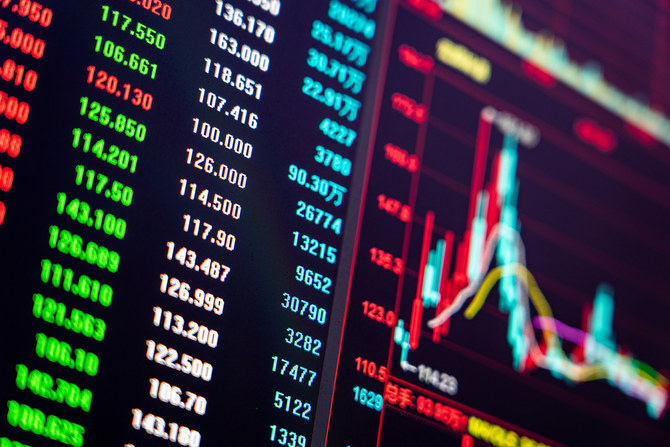
RIYADH: Saudi Arabia’s Tadawul All Share Index closed at 12,708.34 points on Monday, gaining 41.44 points, or 0.33 percent.
The parallel market Nomu also gained 158.48 points, or 0.6 percent, to conclude at 26,548.59.
However, the MSCI Tadawul 30 Index fell 4.77 points – 0.3 percent – to finish at 1,610.23.
The main index posted a trading value of SR9.7 billion ($2.59 billion), with 172 stocks advancing and 54 declining. On the other hand, Nomu reported a trade volume of SR103.7 million.
Saudi Cable Co. was the top performer on TASI as its share price surged 9.89 percent to SR77.80. Saudi Chemical Co. followed next with its share price jumping 7.62 percent to close at SR8.19.
Salama Cooperative Insurance Co. was also among the top performers, climbing 7.19 percent to SR33.55. Al-Etihad Cooperative Insurance Co. and Al Yamamah Steel Industries Co. increased 6.82 and 6.81 percent to SR26.15 and SR42.35, respectively.
Conversely, Saudi Tadawul Group Holding Co. recorded the most significant dip, declining 2.73 percent to SR270.40.
Arabian Internet and Communications Services Co. and the National Co. for Glass Industries also experienced setbacks, with their shares dropping to SR368.20 and SR45.90, reflecting declines of 2.33 and 2.24 percent, respectively. Bupa Arabia for Cooperative Insurance Co. and Saudi Awwal Bank also reported significant losses.
Nomu’s top performer was Abdulaziz and Mansour Ibrahim Albabtin Co., which saw a 9.49 percent jump to SR45. Amwaj International Co. and Meyar Co. also recorded notable gains, with their shares closing at SR55.60 and SR73.90, marking an increase of 8.59 and 5.57 percent, respectively. Alqemam for Computer Systems Co. and Professional Medical Expertise Co. also fared well.
Raoom Trading Co. was the worst performer on the parallel market, declining by 7.72 percent to SR145.80. Other underperformers included Al Mohafaza Co. for Education and Mohammed Hasan AlNaqool Sons Co., whose share prices dropped 4.67 percent and 3.68 percent to SR20.80 and SR44.50, respectively.
Alhasoob Co. and Mulkia Investment Co. declined during the day to settle at SR67.20 and SR34, respectively.



